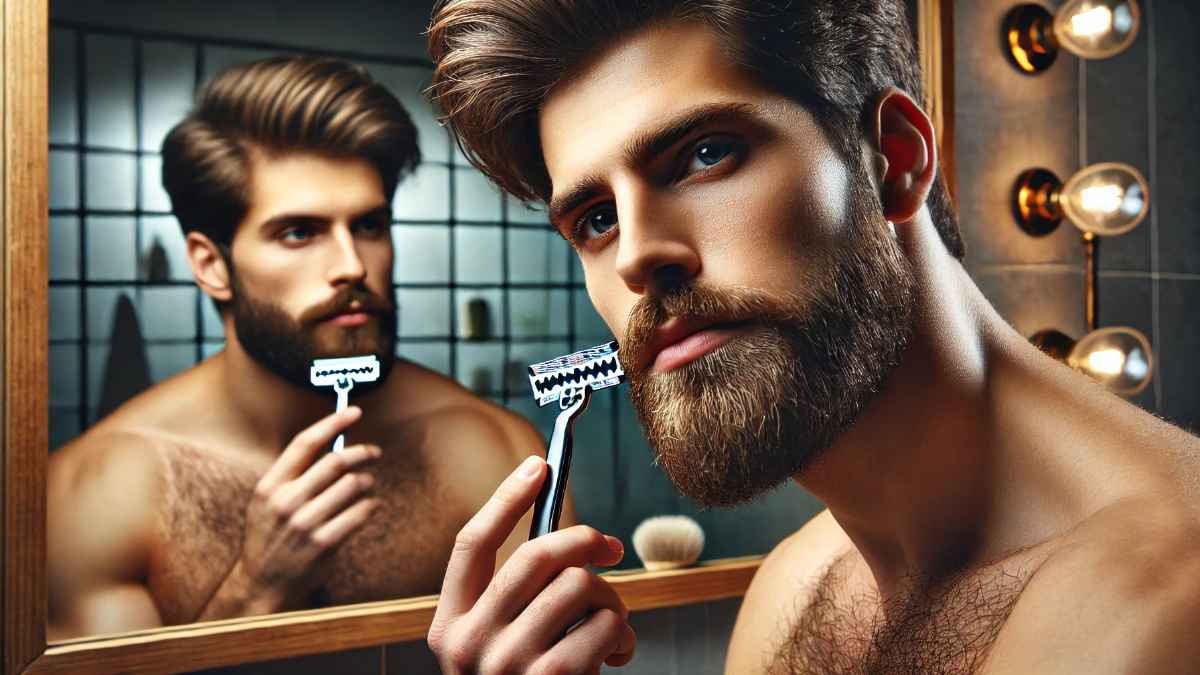Introduction
Shaping your beard with a straight razor is an age-old grooming practice that provides unparalleled precision and a clean, sharp look. Whether you’re a beginner or a seasoned grooming enthusiast, understanding the right techniques, tools, and maintenance tips will help you achieve a barber-quality shave at home. In this guide, we will explore the best straight razors for beard shaping, the correct shaving techniques, and expert tips to elevate your grooming game.
Why Use a Straight Razor for Beard Shaping?
Using a straight razor offers several benefits compared to other shaving tools:
- Precision: Allows for clean lines and a defined beard shape.
- Closer Shave: Provides a closer and smoother shave than electric trimmers.
- Cost-Effective: While an initial investment, a straight razor lasts for years.
- Traditional Experience: Many enjoy the classic, vintage feel of using a straight razor.
Choosing the Right Straight Razor for Beard Shaping
Not all straight razors are created equal. Here are key factors to consider:
Blade Type
- Fixed-Blade Straight Razors – Requires regular honing and stropping.
- Replaceable Blade Razors (Shavettes) – Ideal for beginners; no sharpening required.
Blade Material
- Carbon Steel – Stays sharper longer but requires more maintenance.
- Stainless Steel – Rust-resistant and easier to maintain.
Handle Material
- Wooden Handles – Classic and durable.
- Plastic or Resin – Lightweight and easy to handle.
- Metal Handles – Sleek, modern look with added durability.
How to Shape Your Beard with a Straight Razor
Achieving a perfectly shaped beard requires the right technique. Follow these steps for a flawless look:
Step 1: Prepare Your Beard
- Wash your face with warm water to soften the hair.
- Apply pre-shave oil to reduce irritation and improve razor glide.
- Use a high-quality shaving cream for a smoother experience.
Step 2: Hold the Razor Correctly
- Grip the razor at a 30-degree angle to the skin.
- Use short, controlled strokes to avoid cuts.
Step 3: Shave with the Grain
- Start with the cheeks and jawline before moving to detailed areas.
- Shave in the direction of hair growth to prevent irritation.
Step 4: Define the Beard Shape
- Use the straight razor to create sharp, clean lines along the cheeks and neckline.
- Trim any stray hairs carefully for a refined look.
Step 5: Aftercare
- Rinse with cold water to close pores.
- Apply an alcohol-free aftershave to prevent irritation.
- Moisturize to keep your skin hydrated and healthy.
Common Mistakes to Avoid
- Using a dull razor: Increases the risk of nicks and irritation.
- Skipping pre-shave prep: Leads to a rougher shave and more irritation.
- Pressing too hard: A light touch is key to avoiding cuts.
- Neglecting blade maintenance: Regularly hone and strop your razor.
Best Straight Razors for Beard Shaping in 2025
| Brand | Blade Type | Material | Best For |
|---|---|---|---|
| Dovo Solingen | Carbon Steel | Wooden Handle | Professional Groomers |
| Parker SRX | Replaceable Blade | Stainless Steel | Beginners |
| Feather SS | Replaceable Blade | Resin Handle | Precision Shaving |
| Thiers Issard | Carbon Steel | Horn Handle | Luxury Shaving |

Maintaining Your Straight Razor
To extend the life of your razor:
- Hone the blade every few weeks.
- Strop the razor before each use.
- Keep it dry to prevent rust.
- Store in a protective case to maintain sharpness.
FAQ Section
1. Is a straight razor better than a safety razor for beard shaping?
Yes, a straight razor provides more precision and control, making it ideal for shaping beards.
2. Can beginners use a straight razor for beard shaping?
Absolutely! Start with a shavette (replaceable blade straight razor) before transitioning to a traditional straight razor.
3. How often should I replace my straight razor blade?
If using a replaceable blade, change it every 3-5 shaves. For fixed-blade razors, hone and strop regularly.
4. What shaving cream works best with a straight razor?
A thick, lubricating shaving cream or soap works best for straight razor shaving.
5. Can a straight razor cause ingrown hairs?
If used correctly with proper preparation, a straight razor can reduce the risk of ingrown hairs.
6. How do I sharpen a straight razor?
Use a honing stone and a leather strop to keep your razor sharp.
Conclusion
Using a straight razor for beard shaping is an excellent way to achieve a precise, clean look while embracing a traditional grooming method. By selecting the right razor, following proper shaving techniques, and maintaining your blade, you can enjoy a barbershop-quality shave at home. Whether you’re a beginner or an experienced shaver, investing in a high-quality straight razor will elevate your grooming routine.

